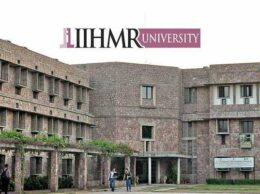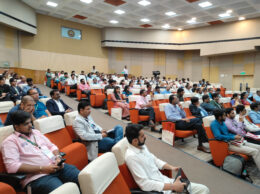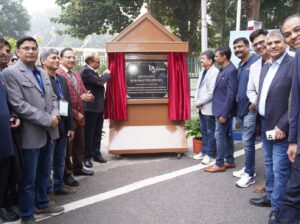HYDERABAD, India — International Institute of Information Technology Hyderabad (IIITH) has set up a virtual reality facility at Osmania Medical College (OMC) to introduce advanced technology-assisted teaching.
Currently this is aimed at teaching anatomy, a basic subject for 1st year MBBS students. The facility was inaugurated by Prof. P J Narayanan, Director of IIITH in the presence of Dr. Shashikala Reddy, Principal of OMC.
The inauguration was followed by a session by Dr. Janaki Vuppala, Head, Department of Anatomy, OMC. In this session, a large class of UG1 students were taught Neuroanatomy using a VR tool designed by IIITH. The VR tool for teaching neuroanatomy was developed as part of a project by Prof. Jayanthi Sivaswamy and her team, she being principal investigator of the project. This joint project with Sree Chitra Tirunal Institute of Medical Sciences, Thiruvananthapuram, is funded by SERB of the Department of Science and Technology, Government of India. This project also sponsored the setting up of the VR facility at OMC.
According to Prof Jayanthi Sivaswamy, “The VR solution that has been developed in this project allows teaching gross as well as radiological anatomy in an integrated manner to UG1 students. This integration is essential since radiological anatomy which is based on images is a key part of clinical practice. However, the integration has not been done so far at UG1 level.” Prof Sivaswamy is well known for her research in the area of medical image computing. Her group’s work on the Indian brain atlas has attracted considerable media attention.
“Virtual Reality is the key technology behind the much-awaited Metaverse. It consists of representing some physical space faithfully on the computer and producing interesting visualizations for different purposes. VR has enormous potential in teaching wherein abstract concepts can be shown and explained with illustrative 2D and 3D visualizations of the underlying process. Anatomy education is apt for the application of VR. This project makes a small beginning with Neuroanatomy wherein the parts and structures inside the brain is explained with the help of 3D imagery, interactive manipulations, etc. We expect this small beginning to have a big impact in the future into teaching anatomy in the future, in collaboration with Osmania Medical College,” said Prof P J Narayanan.









